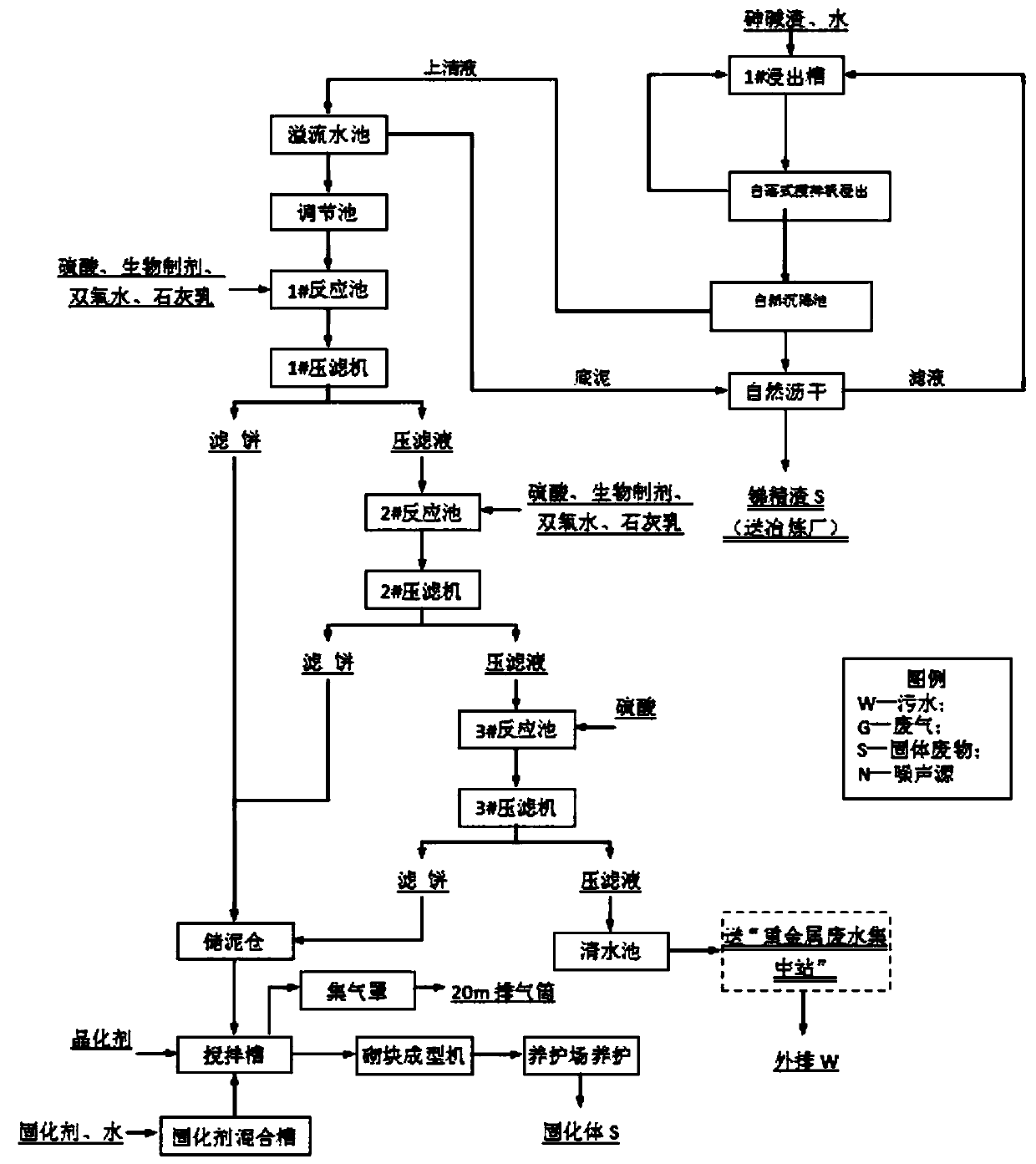A kind of processing method of arsenic-alkali slag
A treatment method and technology for arsenic-alkali slag, applied in the field of hydrometallurgy, can solve the problems of unstable leaching effect, difficult industrial application, complicated treatment process, etc., and achieve the effects of low solid-liquid separation difficulty and reduction of the proportion of fine particles
- Summary
- Abstract
- Description
- Claims
- Application Information
AI Technical Summary
Problems solved by technology
Method used
Image
Examples
Embodiment 1
[0081] Weigh 100kg of arsenic-alkali slag containing 16.10% of arsenic and 22.99% of antimony, add 150kg of water to soak for 68 hours, put it into a self-falling concrete mixer and add 250kg of water to stir at a temperature of about 25°C (stirring speed is 15-18r / min ) to react for 1 hour. Then after natural precipitation, the supernatant was taken out, and the antimony fine slag at the bottom was naturally air-dried. The dry weight of the slag was 32kg. The grades of antimony and arsenic in the analysis slag were: antimony 70.0%, arsenic 1.4%, and the calculation shows that the recovery rate of antimony reached 97.4%. %, the leaching rate of arsenic reaches 97.2%.
Embodiment 2
[0083]Weigh 100kg of arsenic-alkali slag containing 16.10% of arsenic and 22.99% of antimony, add 150kg of water to soak for 72 hours, put it into a self-falling concrete mixer and add 250kg of water to stir at a temperature of about 25°C (stirring speed is 15-18r / min ) to react for 1 hour. After natural precipitation, the supernatant was taken out, and the antimony fine residue at the bottom was naturally air-dried. The dry weight of the residue was 29kg. The grades of antimony and arsenic in the residue were analyzed, and they were respectively: antimony 77.9%, arsenic 1.3%, and the calculation showed that the recovery rate of antimony reached 98.26%. %, the leaching rate of arsenic reaches 97.66%.
Embodiment 3
[0085] Weigh 100kg of arsenic-alkali slag containing 16.10% of arsenic and 22.99% of antimony, put it into a self-falling concrete mixer and add 400kg of water for stirring (stirring speed is 15-18r / min) and react for 1 hour. After natural precipitation, the supernatant was taken out, and the antimony fine residue at the bottom was naturally air-dried. The dry weight of the residue was 34kg. The grades of antimony and arsenic in the analysis residue were: antimony 61%, arsenic 2.9%, and the calculation showed that the recovery rate of antimony reached 90.21%. %, the leaching rate of arsenic reaches 93.88%. The arsenic-alkali slag was not pre-soaked, and the leaching rate was slightly worse than that of Example 2.
PUM
| Property | Measurement | Unit |
|---|---|---|
| recovery rate | aaaaa | aaaaa |
Abstract
Description
Claims
Application Information
 Login to View More
Login to View More - R&D
- Intellectual Property
- Life Sciences
- Materials
- Tech Scout
- Unparalleled Data Quality
- Higher Quality Content
- 60% Fewer Hallucinations
Browse by: Latest US Patents, China's latest patents, Technical Efficacy Thesaurus, Application Domain, Technology Topic, Popular Technical Reports.
© 2025 PatSnap. All rights reserved.Legal|Privacy policy|Modern Slavery Act Transparency Statement|Sitemap|About US| Contact US: help@patsnap.com



